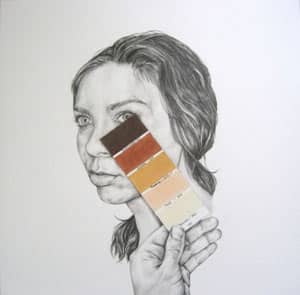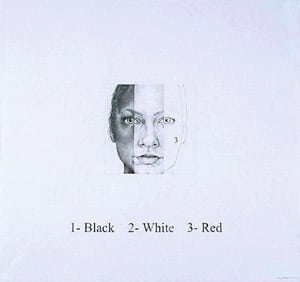by Rinku Sen
Something happened in the months leading up to and including the election of Barack Obama as the President of the United States, something that people working for racial justice could see coming at us like a tornado. The word “postracial” cropped up on cable news, in OpEd columns and, finally, at kitchen tables and around neighborhood bars. The rise of a man of color, indeed a black man, to the most influential political position in the world symbolized that the country had resolved its racial issues. Democratic party triumphalism fed this notion – not only did we beat back the GOP, but we also made history!

Postracialism grows out of the trope of colorblindness, but is even more aggressive in resisting racial justice standards. Like post-feminist, it implies not just a destination – a society that doesn’t use race to judge people – but asserts that we have arrived at that place. Postracialists are more hostile to changing structures and rules to address persistent racial disparities, which appear nowhere in the “postracial” story.
The Right began preparing this updated attack as soon as it appeared that Obama had a chance of winning the Democratic nomination. After the candidate’s February 2008 speech on race, which alluded only vaguely to structures and rules, Newt Gingrich released a long written response asserting that the GOP cares about racism too, but finds no answers in the policy solutions of the left. A return to personal responsibility, presumably including the responsibility not to be individually racist, was the way to go.
In a May 2008 column, for the Chronicle of Philanthropy, William Schambra, director of the Bradley Center for Philanthropy and Civic Renewal at the conservative Hudson Institute, called out a number of groups working to end “structural racism” (including mine) as un-American hacks akin to Jeremiah Wright. “Senator Obama ultimately decided that Mr. Wright’s ‘incendiary language’ — language so similar to that thrown about freely by structural-racism theorists,” wrote Schambra, “reflected ‘views that have the potential not only to widen the racial divide, but views that denigrate both the greatness and the goodness of our nation.’” If Obama himself dismissed structural theories of racism, then they must really be over the top.
Look for Impact, Not Intention
The mythology of postracialism, like colorblindness, is terribly difficult to counter because it is so intuitive and aspirational. It makes sense at a gut level that if people endure hardship because of their racial identities, canceling out the importance of those identities solves the problem. What better marker of progress could there be than a black President? The ease with which Americans adopted this frame certainly points to a deficit in the body politic – its inability to acknowledge the depth of the racial gap and its true causes. But, to complicate matters, it also speaks to Americans’ positive desire to not be racist. The first works against us. The latter, however cynically we might view it, provides an opening that we have to take to expand the constituency of people who will act for racial justice.
Unfortunately, this desire is based on an incomplete definition of racism. The average American, of any color, sees racism as intentional, explicit action of one individual against another. The many examples of such racism reinforce this definition daily, and sometimes in very high profile ways, as in the cases of media figures Don Imus, Glenn Beck and Lou Dobbs. A purely individual definition of racism obstructs sustained collective action. If hateful is “just how some people are,” and if we outlawed explicit racism through civil rights laws, then, the logic goes, we’ve done all we can as a society.
| Interpersonal racism is down while structural racism gathers strength. |
But this is only one way in which racism works. It has terrible effects, from lost education to death, but it is enabled by rules and structures that appear on the surface to be race-neutral. In my work, institutional racism refers to discriminatory treatment, unfair policies, practices and patterns, and inequitable opportunities and impacts in discrete entities (such as a school or district). Structural racism is the cumulative effect of the racism of multiple institutions over time. Racial justice, then, connotes equitable opportunities, treatment, impacts and outcomes for all. We need people to work toward not just new attitudes and actions, but also new practices and policies. In moving the institutional and structural frames, my organization emphasizes the impact – which we can track through data – rather than the intention of the people making and implementing these policies and practices, which is virtually impossible to pin down.
Most Americans have no idea that these other levels of racism are at work. This is why Rich Benjamin, the author of Searching for Whitopia and himself a dark-skinned black man, concludes after two years of visiting and living in the whitest communities of the United States that interpersonal racism is down even while structural racism gathers strength. These communities welcomed him quite happily, Benjamin notes, socializing easily, taking him hunting, sharing their real estate porn with him. But they also used various rules and regulations to create all-white enclaves and saw no contradiction between the two. Such rules might include zoning laws that separate high-end and affordable housing, or public transportation budgets that privilege drivers and commuting professionals while forcing their nannies and gardeners to travel many hours each day.
Replacing Stale Stories, Building New Frames
Most Americans, then, don’t see racism as a system enabled by rules and structures. They have no idea that when we lay seemingly race-neutral policies on top of the history of explicitly racist policy, the racial gap remains in place or grows. Racial justice activists make far too many assumptions about what people know, and often take a berating tone that does’‚t invite many new people to the conversation.
At the Applied Research Center (ARC), we focus entirely on institutional and structural racism (while recognizing the other kinds) and take as remedial an approach as the audience requires. Not focusing on rooting out the individual racist, while it lets some bad people off the hook, does help those audiences put aside their fear of being called racist long enough to entertain some actual solutions. If there is opportunity for one-on-one or small group conversation with someone operating from a postracial frame, I usually begin by asking questions. What does postracial mean to you? Is it possible that progress on some fronts doesn’t mean we’ve moved entirely past race? Is being postracial really the goal, or is something else required to actually unify the diverse population of the United States?

We generally lead with stories rather than with data. The common response to “we are now postracial” is “no, we’re not, look at all the statistics,” which doesn’t work very well. Social psychologists tell us that human beings carry dominant frames in their heads. Frames are systems of thinking that are triggered and upheld not by data, but by images, stories and archetypes. When people are confronted with facts that disrupt their dominant frame, they dismiss the facts rather than the frame. So, a rebuttal that starts with data is bound to work only with people who are already convinced. The only way to trigger a competing frame in the same brain is to engage people in a different story.
For example, in the debate over who belongs in the United States, people who are immigrants are usually represented as criminals (by conservatives) or as workers (by liberals). Neither frame acknowledges the full range of contributions coming from this community; neither builds support for truly forward-looking policy. So ARC represents immigrants as more than a pair of hands available for picking, cleaning and writing computer code. In The Accidental American, I tell the story of Fekkak Mamdouh, a Moroccan-born waiter who arrived without documents in the late 1980s, and his success in building the Restaurant Opportunities Center of New York. Through Mamdouh’s life – complete with childhood, marriage and the emotional conflicts that accompany his transformation from waiter to organizer – the reader sees immigrants of color as civic and cultural actors rather than just as victimized workhorses.
We need an alternative to postracialism, and, by implication, to colorblindness. For now, ARC uses “racial consciousness” as a bridge to the larger frame of racial justice. We place a heavy emphasis on solutions that improve life for communities of color, while discussing how they support low income people, women, the elderly – in short, placing racial justice at the center of a compassionate, inclusive and effective society. Great transformations are possible in this political moment as never before, even in the midst of enormous rhetorical and practical challenges. Putting those transformations in motion requires people who care about racial justice to develop sophisticated skills in storytelling, as well as in analysis, advocacy and organizing.
Rinku Sen is the President and Executive Director of the Applied Research Center, a racial justice think tank, and the publisher of ColorLines, the magazine on race and politics.
Also see Faith Ringgold, The Art Perspective in this edition of On The Issues Magazine.
Also see Beginning with the Children by Eleanor Bader in this edition of On The Issues Magazine.
